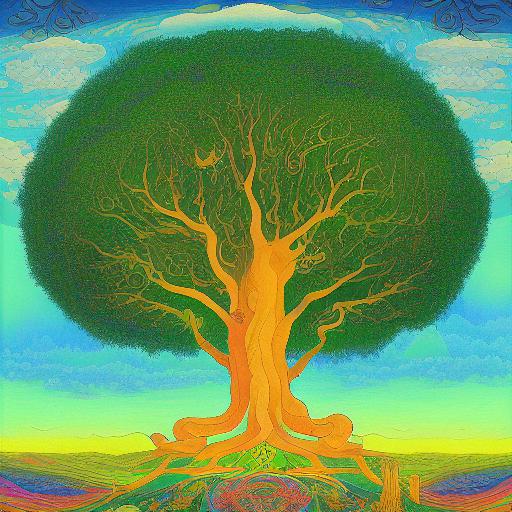What is Psychedelic art?
Psychedelic art is an artistic style that emerged in the 1960s and is often associated with the use of hallucinogenic drugs such as LSD. This type of art is characterized by bold and bright colors, geometric patterns, and surreal imagery that is inspired by the hallucinations experienced during drug use.
Features of Psychedelic art
Bold and bright colors: Psychedelic art often features bright, bold colors such as pink, orange, yellow, and purple. These colors are often used to create a sense of energy and excitement.
Geometric patterns: Psychedelic art often includes geometric patterns such as spirals, circles, and triangles. These patterns can create a sense of movement and depth in the artwork.
Use as album covers
Album covers: Many classic rock albums from the 1960s and 1970s feature psychedelic art on their covers. Some notable examples include The Beatles’ “Sgt. Pepper’s Lonely Hearts Club Band,” Pink Floyd’s “The Wall,” and Jimi Hendrix’s “Electric Ladyland.”
Psychedelic art is often featured at music festivals such as Burning Man and Coachella, where large-scale installations and performances are inspired by the psychedelic art movement.
What is AI-generated art?
Designers can benefit from AI-generated art in several ways, including increased efficiency, customization, diversity, accessibility, and innovation. This approach enables designers to rapidly generate high-quality visuals, personalize designs, explore different artistic styles, and challenge conventional artistic norms. Integrating AI-generated art into designs is made effortless with tools like Visual Paradigm Online.
How to write this AI prompt?
The prompt is composed of several different elements, each of which provides specific guidance to the AI on what kind of image to generate. First, the prompt describes the basic scene for the image, specifying that it should be a painting of a big green tree with a sky in the background. This sets the foundation for the image, providing a starting point for the AI to work from.
Next, the prompt specifies that the painting should be an ultrafine detailed painting inspired by Ivan Bilibin. Ivan Bilibin was a Russian illustrator known for his highly detailed and intricate illustrations, so this reference suggests that the AI should try to create an image with similar levels of detail and complexity. This might mean incorporating ornate patterns into the tree’s leaves or intricate bark texture into the trunk.
The prompt also references the CG Society contest winner, which could be a reference to a specific artist or contest known for producing high-quality or visually striking images. This element of the prompt may encourage the AI to produce a more impressive and visually stunning image.
Overall, each individual part of the prompt contributes to the image being generated in a unique way, providing specific guidance to the AI on what kind of image to produce.


